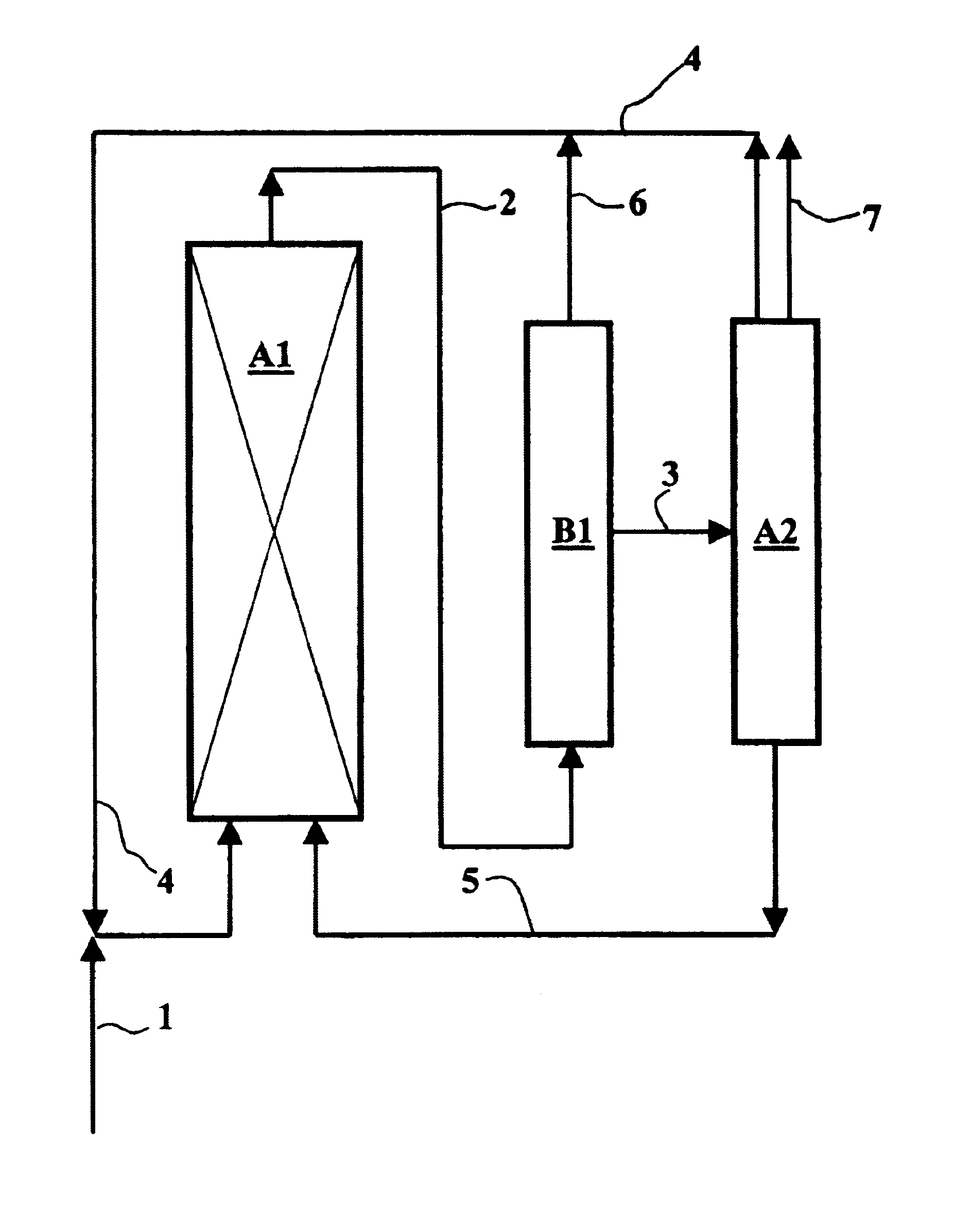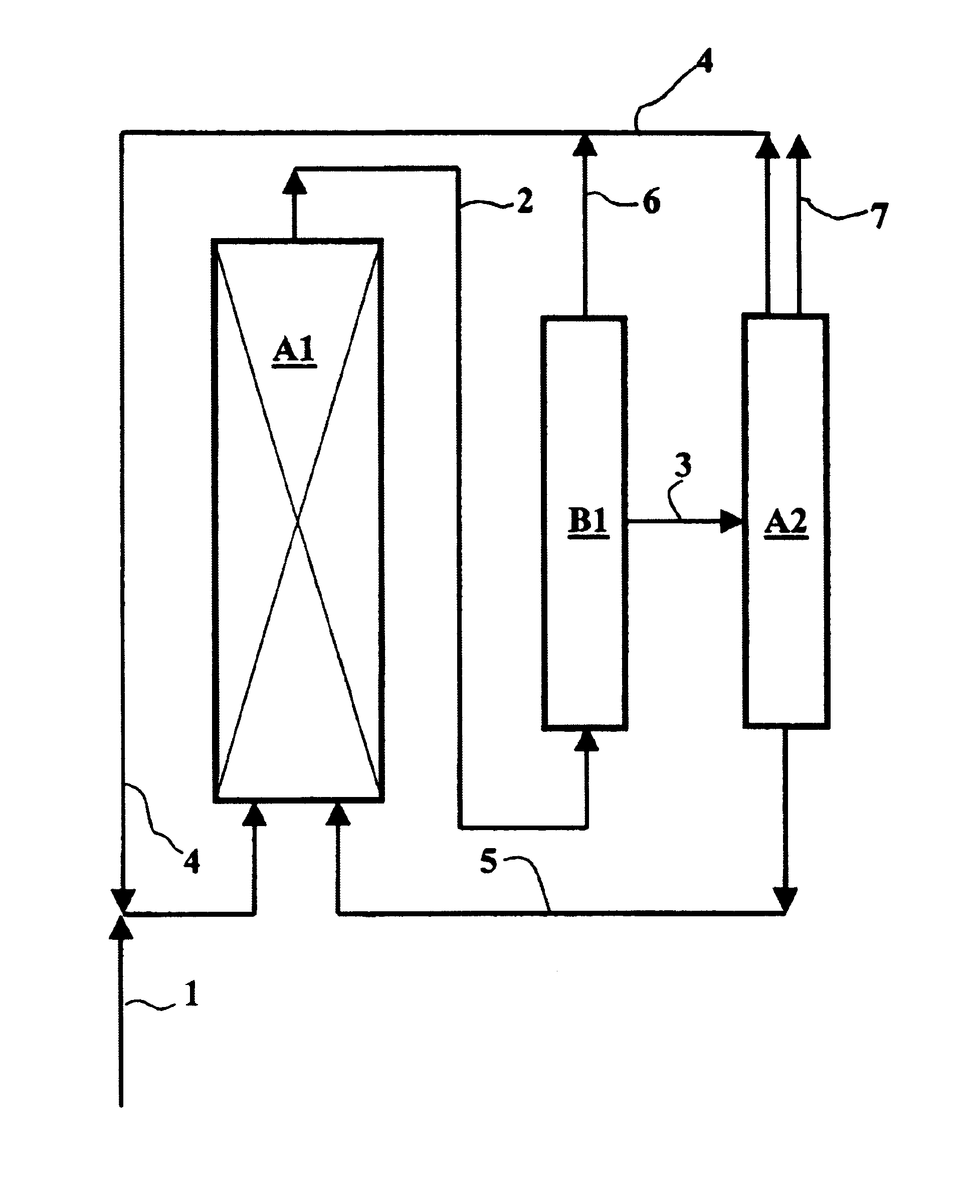Process for carbonylating alcohols, employing a catalyst based on rhodium or iridium in a non-aqueous ionic liquid, with efficient catalyst recycling
a technology of carbonylating alcohol and catalyst, which is applied in the field of process, can solve the problems of high cost and complex separation, and achieve the effects of improving metal recycling, low vapour tension of ionic liquid, and high thermal stability
- Summary
- Abstract
- Description
- Claims
- Application Information
AI Technical Summary
Benefits of technology
Problems solved by technology
Method used
Image
Examples
example 1
[0048]The carbonylation reaction was carried out in a 100 ml stainless steel autoclave with a vitrified coating provided with a jacket for regulating the temperature by circulation of a heat transfer fluid and provided with an efficient magnetic stirring system. A solution containing 200 mg of RhCl3.3H2O (0.76 mmoles of rhodium), 5 ml of iodomethane, 5 ml of 3-butyl-1-methylimidazolium bis(trifluoromethylsulfonyl) amide [BMI][Tf2N] and 13 ml of methanol were introduced into the autoclave which had been purged of air and moisture and placed under 1 atmosphere of carbon monoxide. The carbon monoxide pressure was increased to 3 MPa, the temperature was increased to 130° C. and stirring was commenced. After 2 hours of reaction, the carbon monoxide inlet was closed and the reactor was rapidly cooled to 25° C. After removal from the autoclave, the effluent was homogeneous, single-phased and red in colour.
[0049]The whole system was introduced into a flash distillation assembly. The distill...
example 3
[0052]The methanol carbonylation reaction was carried out in the same apparatus and using the same operating procedure as that described in Example 1, with the exception that 10 ml of distilled water was added to the system and the reaction time was increased to 3 hours. After withdrawal from the autoclave, the effluent was homogeneous, single-phased and red in colour.
[0053]The whole system was introduced into a flash distillation assembly. The distillate was in the form of a practically colourless homogeneous liquid and the flash residue was in the form of a bright red clear homogeneous liquid. This coloration denotes the presence of the ion (Rh(CO)2I2)− dissolved in the ionic liquid. Gas chromatographic analysis of the distillate and weighing the unflashed residues (ionic liquid+rhodium) provided the material balance of the reaction. The methanol conversion was 99.5% by weight. The selectivity was 99.5% for acetaldehyde and 0.5% for methyl acetate.
example 4
Recycling
[0054]The methanol carbonylation reaction was carried out in the same apparatus and using the same operating procedure as that described in Example 1. The ionic liquid phase containing the catalyst recovered at the distillation column bottom was recycled to the reactor for a fresh cycle. 5 ml of iodomethane and 13 ml of fresh methanol were added. No makeup of ionic liquid was required.
[0055]Three consecutive cycles were carried out. They are summarized in the following table:
[0056]
TempPTimeConversionSelectivity (%)CycleIonic liquid(° C.)(MPa)(h)(%)CH3CO2HCH3CO2CH31[BMI][TF2N]1303299.69642[BMI][TF2N]1303299.59643[BMI][TF2N]1303299.7973
PUM
| Property | Measurement | Unit |
|---|---|---|
| melting point | aaaaa | aaaaa |
| pressure | aaaaa | aaaaa |
| temperature | aaaaa | aaaaa |
Abstract
Description
Claims
Application Information
 Login to View More
Login to View More - R&D
- Intellectual Property
- Life Sciences
- Materials
- Tech Scout
- Unparalleled Data Quality
- Higher Quality Content
- 60% Fewer Hallucinations
Browse by: Latest US Patents, China's latest patents, Technical Efficacy Thesaurus, Application Domain, Technology Topic, Popular Technical Reports.
© 2025 PatSnap. All rights reserved.Legal|Privacy policy|Modern Slavery Act Transparency Statement|Sitemap|About US| Contact US: help@patsnap.com


